GuitarPlayer Verdict
The Martin O’ahu HG-28 blends dreadnought power with 000 comfort, inspired by historic Hawaiian guitars and championed by Chris Martin IV. Its shallow, scaled-down body and short scale deliver exceptional playability, lively resonance, and a focused mid-to-upper-range voice. Koa construction and ergonomic design make it ideal for flatpicking or fingerstyle, excelling both at home and in the studio. Though pricey, it offers custom-level quality, unique character, and broad appeal for players seeking a refined, versatile alternative to traditional Martins.
Pros
- +
Vivacious tone and fabulous playability
- +
extremely comfortable and quite unique
Cons
- -
Only that it falls into a crack instead of being recognized as a killer hybrid
You can trust Guitar Player.
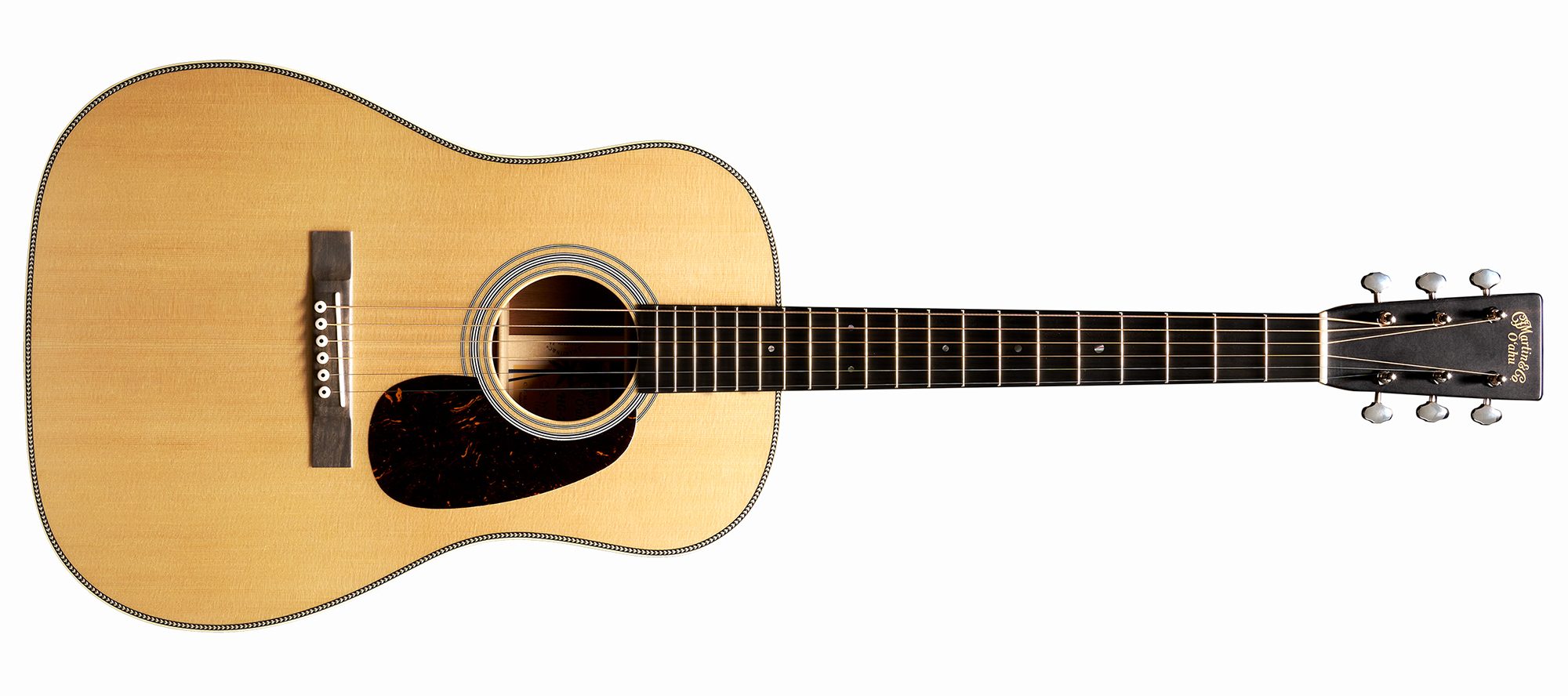
What happens when you cross a Martin dreadnought with a 000 and infuse some historic Hawaiian guitar spirit? That’s essentially what Martin has on its hands in the form of the Martin O’ahu HG-28. Its novel HG (Hawaiian Guitar) body style is a trimmed-down, sloped-shouldered dreadnough made from solid flamed Hawaiian koa back and sides, capped off with a solid spruce top at 000 depth.
Is it a simply a novel crossover concept, or does it truly deliver a beautiful blend of Martin’s bread-and-butter body styles?
I was curious to find out. After all, the prospect of a more manageable dreadnought is appealing to a diminutive dude, and, while Martin offers short-scale LX models, a shallow full-scale model is intriguing.
I’ve never come across one before, but Chairman of the Board Chris Martin IV discovered a Gibson HG-20 from the late ’20s or early ’30s that helped inspire this new creation. He’s been on something of a vision quest to understand and celebrate the crucial role that the Hawaiian music craze from that era played in the development of the steel-string. We continue to cover it with great appreciation, and the HG-28 marks another significant step along that path.
The HG-28 now lies at the heart of Martin O’ahu family of instruments, along with the Custom K-1 Major Kealakai that was created in conjunction with Hawaiian master luthier and historian Kilin Reece. That large guitar pays tribute to legendary Hawaiian musician Major Kealakai and his groundbreaking custom Martin, made way back in 1916! The Kealakai paved the way for the venerable Martin dreadnought and practically all larger bodied steel-strings.
The pendulum swings the other way with the HG-28 toward the smaller designs of the original Hawaiian guitar era combined with the shape of the famous Martin dreadnought, which might never have come about without its Hawaiian influence.
Chris Martin IV says, “The HG-28 is something that should have been made back then and never was until now.”
All the latest guitar news, interviews, lessons, reviews, deals and more, direct to your inbox!
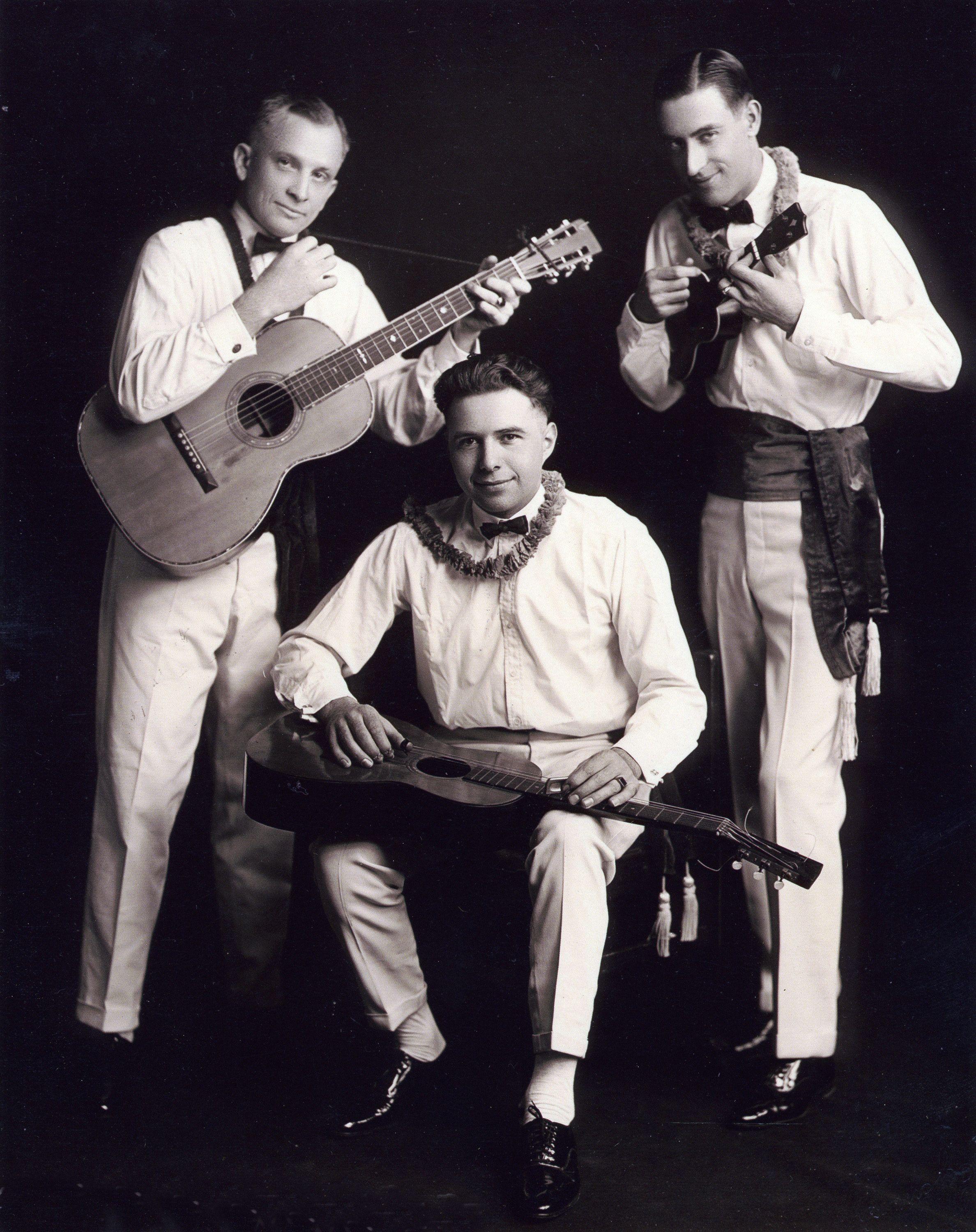
The Martin O’ahu has a depth of four inches compared to four and 3/4 inches for a Standard Series dreadnought, and a scale length of 24.9 inches compared to 25.4 inches. The HG-28’s max width of 14 1/2 inches is a full inch less than a Standard dread and half an inch narrower than a 000 body. So, whereas the K-1 is essentially a deep-dish quad 0 or Martin M body style, you can think of the HG-28 as shallow-dish Martin dreadnought at 000 scale length with a bit of a trim around the hips, which ultimately makes it quite unique.
Martin signature artist Craig Thatcher says, “It’s not just a miniature edition of a dreadnought. It’s something completely different.”
I saw the first HG-28 prototype at the 2024 NAMM Show and asked for a review unit after one strum. I was immediately struck by how nimble it felt in hand, how cozy its body felt sitting on my lap, and its incredibly resonant tone. Production was slow to follow and the first one only became available very recently, so the HG-28 is still very fresh and packs way too much promise to let it slip between the cracks.
The HG-28 sounds vivacious. The warm, yet clear-and-present tone matches its aloha intention and snazzy aesthetic, a true beauty in classic Martin Style 28, framed with snappy herringbone trim. Notes seem to spring forth and bloom, and chords project with an open, airy quality. This instrument seems to welcome your playing and it practically rewards you for doing so. It takes precious little effort to generate ample string energy and activate its solid spruce top. Koa back and sides contribute heavily to its featherlight feel and nuanced sound.
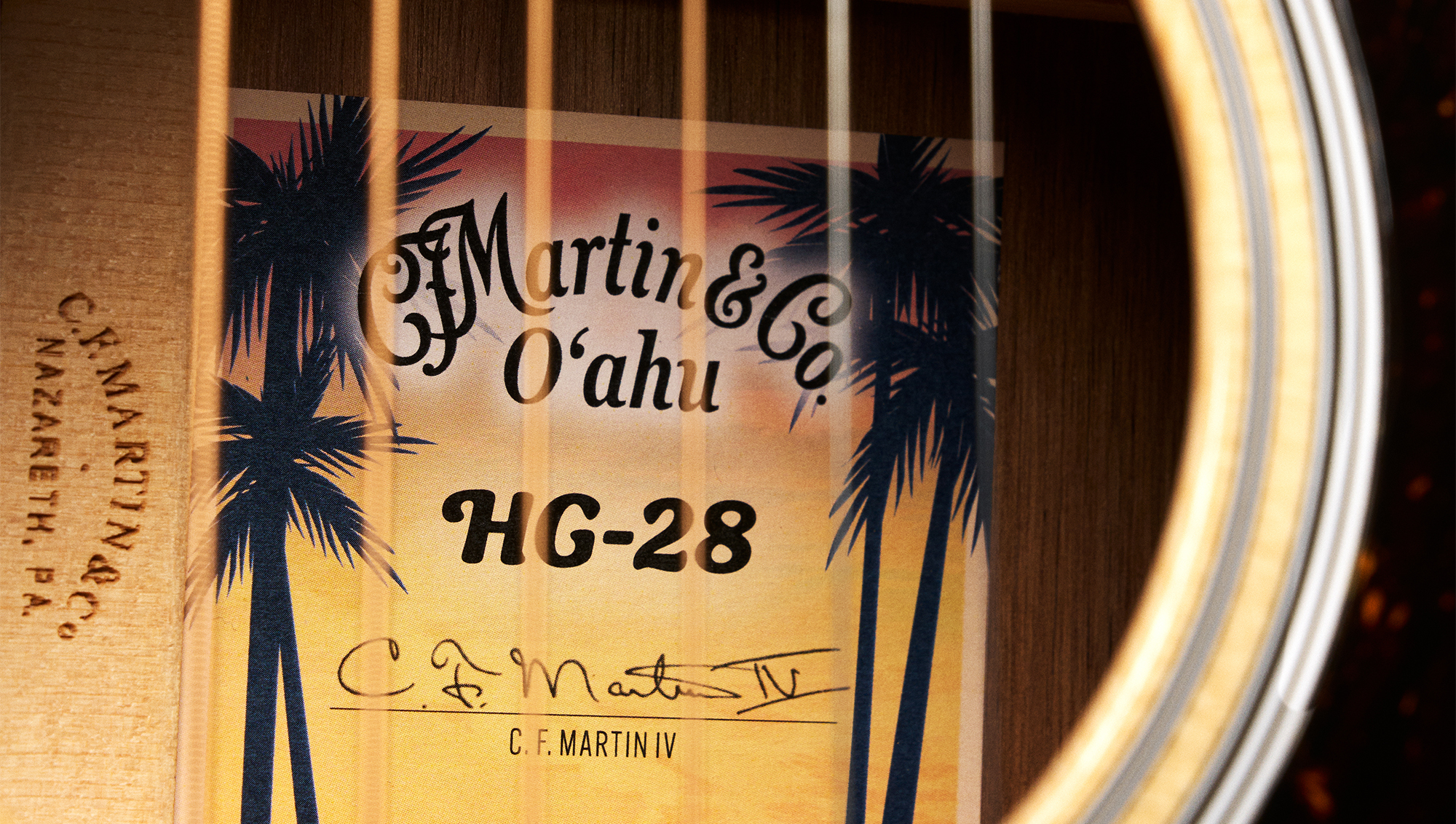
The signature Martin sound is certainly represented, but this guitar has its own shade that’s more focused in the middle and upper range. A Standard D-28, for example, sounds like a cannon by comparison. I can totally appreciate that for certain circumstances, but there were plenty of times around the house and in the recording studio when this more dynamically sensitive instrument better served the situation. And then there’s the playability.
The HG-28 has a relaxed feel with über playability thanks to its smaller body and slightly short scale length. While it looks like a dreadnought because of the body shape, it probably has more in common with the triple-0 from a playability standpoint, and perhaps overall.
It’s hard to bend strings on a traditional Martin dreadnought, but it’s easy to bend them on the HG-28. It can do the classic bluegrass flatpicking thing and is actually much easier to play than even the signature Billy Strings, which is particularly fleet under the fingers for a D-28. The most surprising element of the HG-28’s playability is how fabulous it feels as a fingerpicker. That fingerpicking goodness is due in part to its full one and 3/4–inch width at the nut, so even though I would have guessed a narrower spec there’s plenty of finger space, but there’s more to that story.
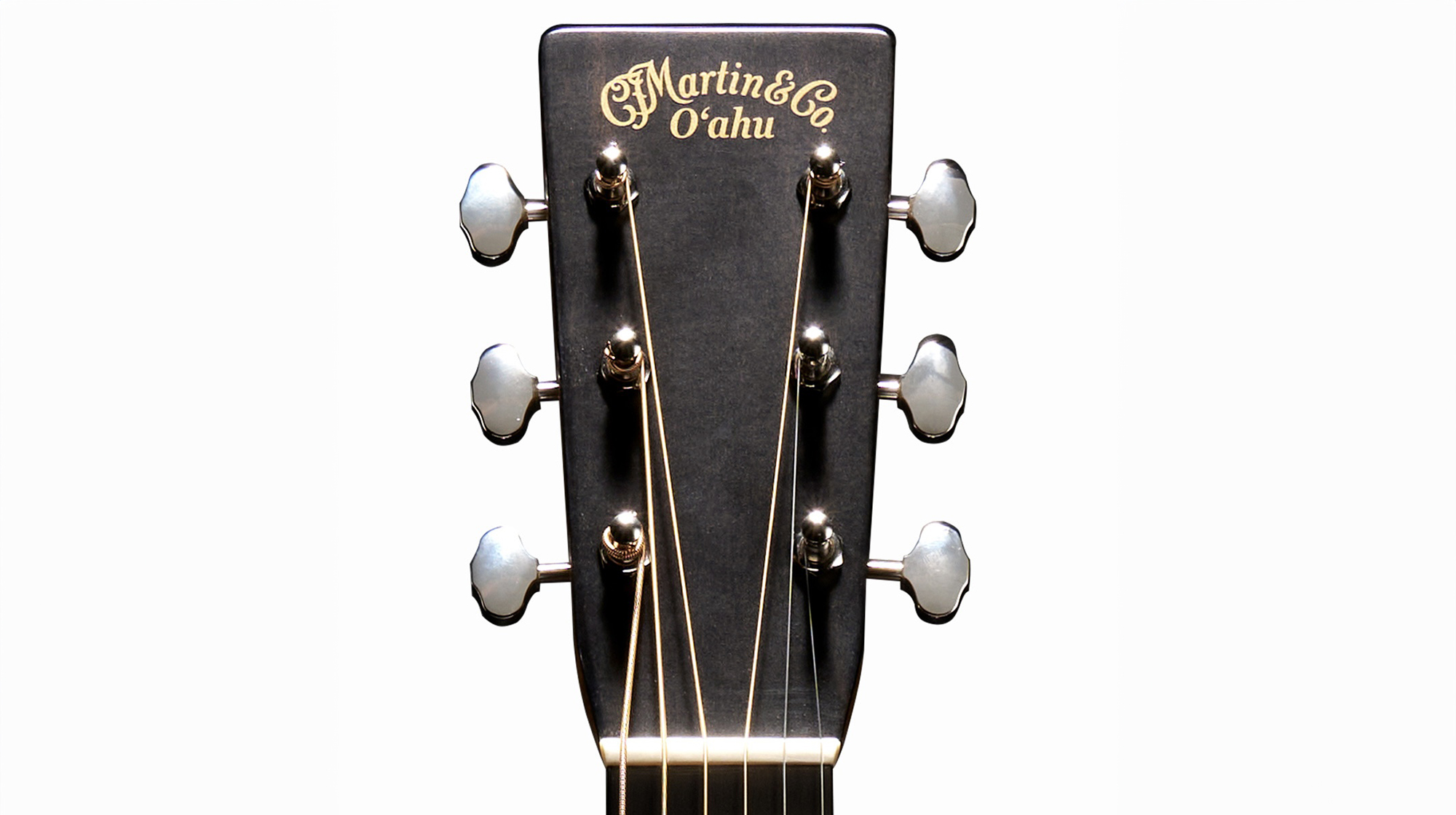
To me, the hidden key is its accessibility. Since the whole body is scaled back a bit to be slightly smaller than a 000 — which is slightly smaller than the dreadnought from which the HG takes its shape — the angle of the dangle as you play is slightly different in every way. Your strum hand naturally ends up further over the sound hole toward the neck — kind of like on a 12-fret guitar, even though this one has 14 frets to the body.
Ultimately, you pluck and fingerpick from an extremely advantageous position. You naturally draw your whole upper body closer over the fretboard, making it feel easier to access the upper frets than on most noncutaway acoustics. Factor in a low-profile neck with a high-performance taper and the playability is off the charts. I can play passages with finesse on the HG-28 that are a struggle to execute at all on most other guitars.
And then there’s the toughest test — under a red-hot studio light. Options abound where I track at Lucky Recording Company, including many Martins. I didn’t believe that we truly needed another one when I took the HG-28 along for a session of Yosemite songs, but when I brought it to compare, there was no comparison, at least not for these particular songs. We put the other guitars right back on the rack as the Martin O’ahu delivered such a pristine, positively perfect tone on the mic and facilitated such ease of performance that it made two tunes in one night.
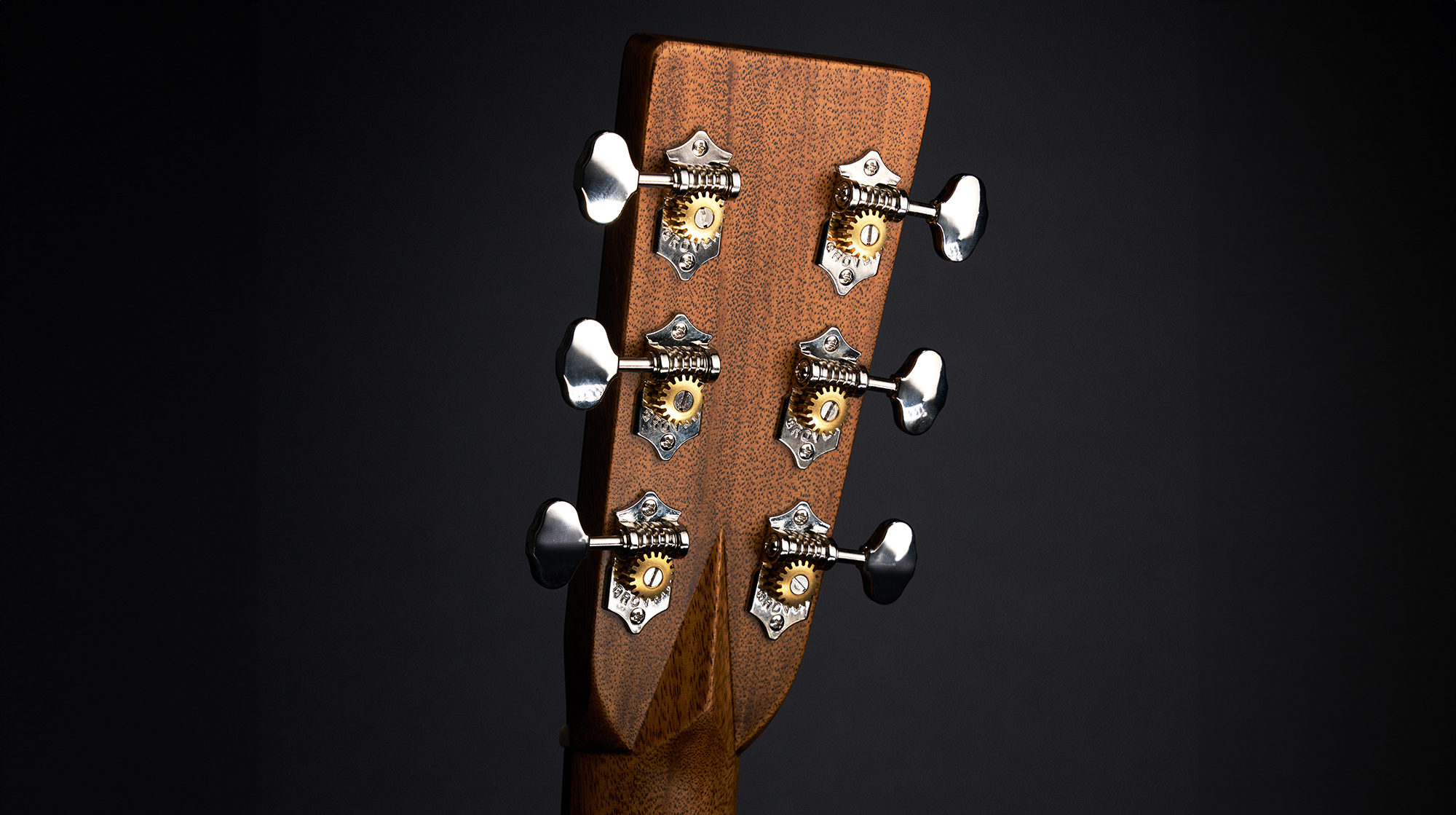
One was the most difficult fingerpicking track I’ve ever attempted, and the other the most delicate. That’s the highest honor I can mention. My heart was full of mahalo for having the HG-28 on hand that night, and now it’s difficult to imagine the recording arsenal without it. One might go for a larger guitar to fill the sonic spectrum playing solo acoustic guitar or a heartier sound in a band situation, but when there’s drum and bass, the engineer usually rolls off the low end of the acoustic anyway, so you might and well go for the best mid and top range possible.
I’d recommend this instrument to a wide variety of different players. If you dig the Martin dreadnought but feel it’s a bit big for your body or boomy in the bottom end, the HG-28 could be your best friend. If you love the playability of a triple-0 but want something with a bit more open presence and resonance, this koa creation could be just the ticket. And its relaxed feel is perfect for playing in Hawaiian “slack key” tunings such as “taro patch,” which mainlanders know as open G major or Keith Richards tuning.
If you want a campfire guitar that can do all of that in a travel-friendly package, the HG-28 fits the bill. That is if you’ve got the bucks for such a buy. It’s not cheap, but the Martin O’ahu HG-28 offers the holistic quality of a custom build made from exotic wood at a production guitar price point. So there’s great value as well in this heirloom-worthy instrument that will only sound much more profound and increase in value over the years. Hawaiian guitar enthusiasts will dig how this guitar connects the rich musical history of the islands with an eye toward the future. I can hardly wait to hear this baby in 2045!
If you’re a Martin aficionado who has already got all the staples, here’s something different that’s not too different when you think about it. This hybrid from a parallel universe makes a ton of sense. I’m shocked that such a peanut butter–and-jelly combination of dreadnought and triple-0 flavors hasn’t happened until now. Oh well — there’s no better time than the present to appreciate this modern Martin marvel.
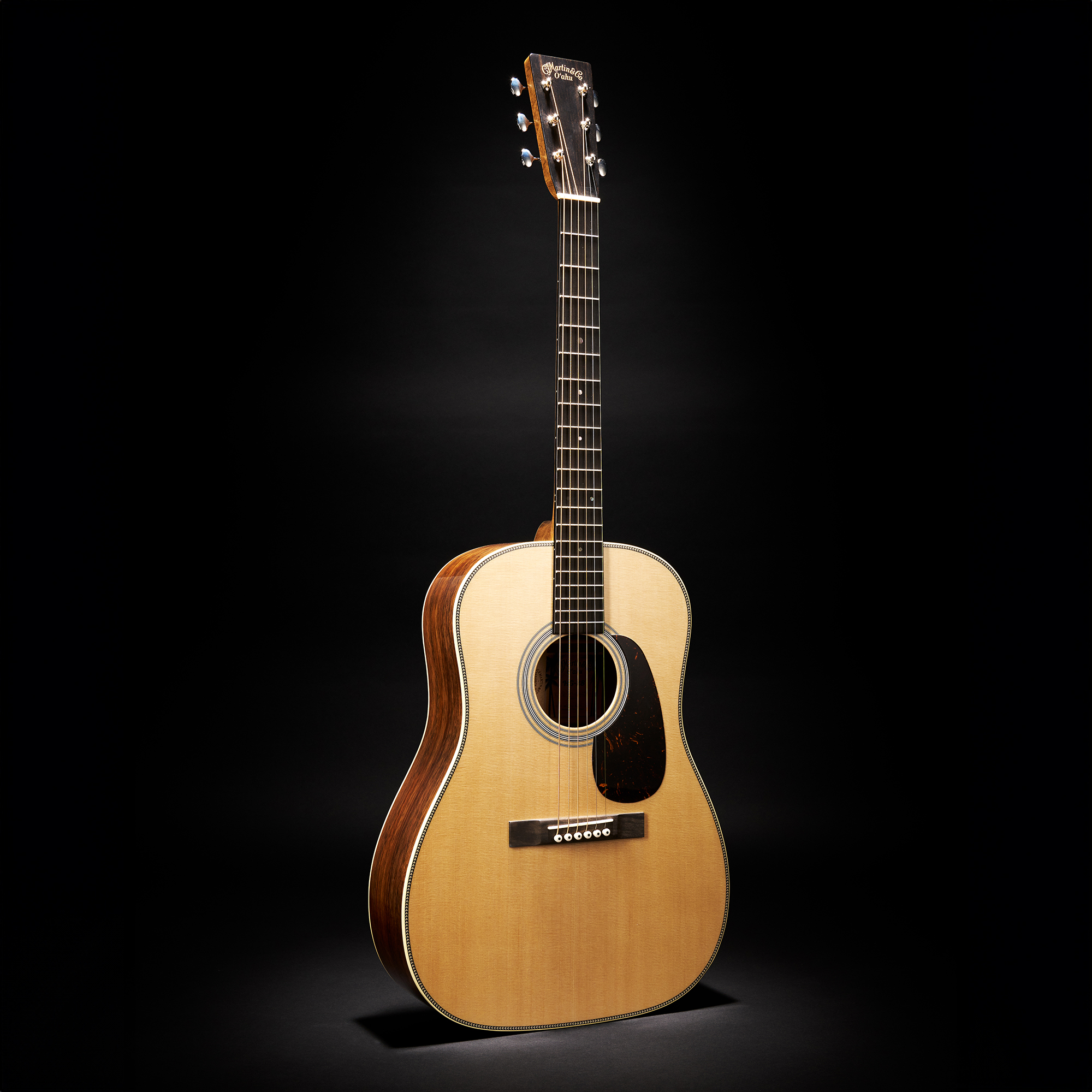
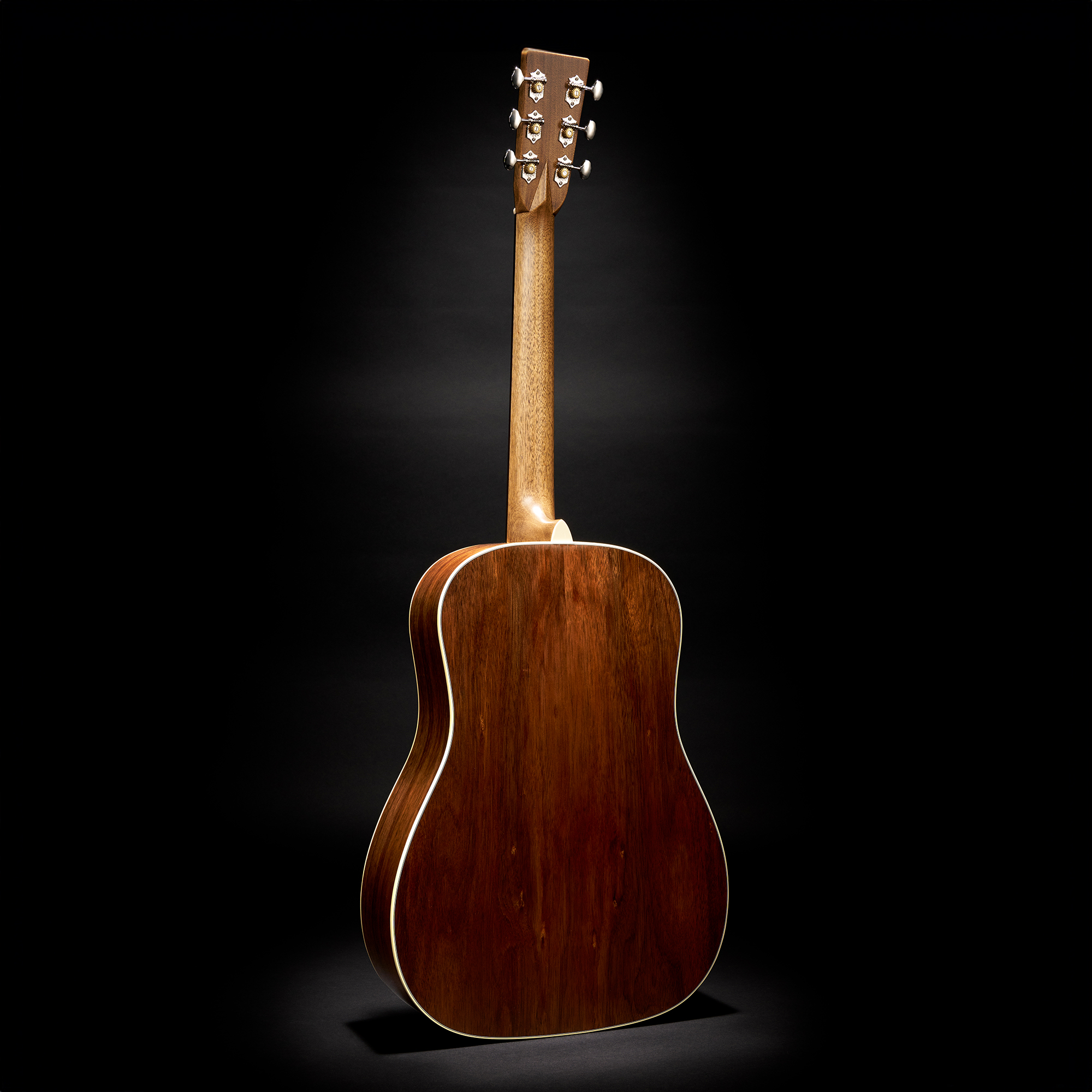


SPECIFICATIONS
CONTACT martinguitar.com
PRICE $3,599 with softshell case
NUT WIDTH 1.75", bone
NECK Select hardwood, GE modified low oval profile with high performance taper, dovetail joint
FRETBOARD Ebony with abalone inlays in Old Style 18, 24.9" scale
FRETS 20, 14 to body
TUNERS Nickel open gear with butterbean knobs
BODY Solid koa back & sides, solid spruce top
BRIDGE Ebony with compensated bone saddle
ELECTRONICS None
FACTORY STRINGS Martin Authentic Acoustic Lifespan 2.0 Phosphor Bronze Light gauges .012—.054
WEIGHT 3.8 lbs (as tested)
BUILT USA
PRO Vivacious tone, fabulous playability, extremely comfortable, quite unique
CON Only that this Martin dreadnought/000 crossover falls into a crack instead of being recognized as a killer hybrid
Jimmy Leslie is the former editor of Gig magazine and has more than 20 years of experience writing stories and coordinating GP Presents events for Guitar Player including the past decade acting as Frets acoustic editor. He’s worked with myriad guitar greats spanning generations and styles including Carlos Santana, Jack White, Samantha Fish, Leo Kottke, Tommy Emmanuel, Kaki King and Julian Lage. Jimmy has a side hustle serving as soundtrack sensei at the cruising lifestyle publication Latitudes and Attitudes. See Leslie’s many Guitar Player- and Frets-related videos on his YouTube channel, dig his Allman Brothers tribute at allmondbrothers.com, and check out his acoustic/electric modern classic rock artistry at at spirithustler.com. Visit the hub of his many adventures at jimmyleslie.com
